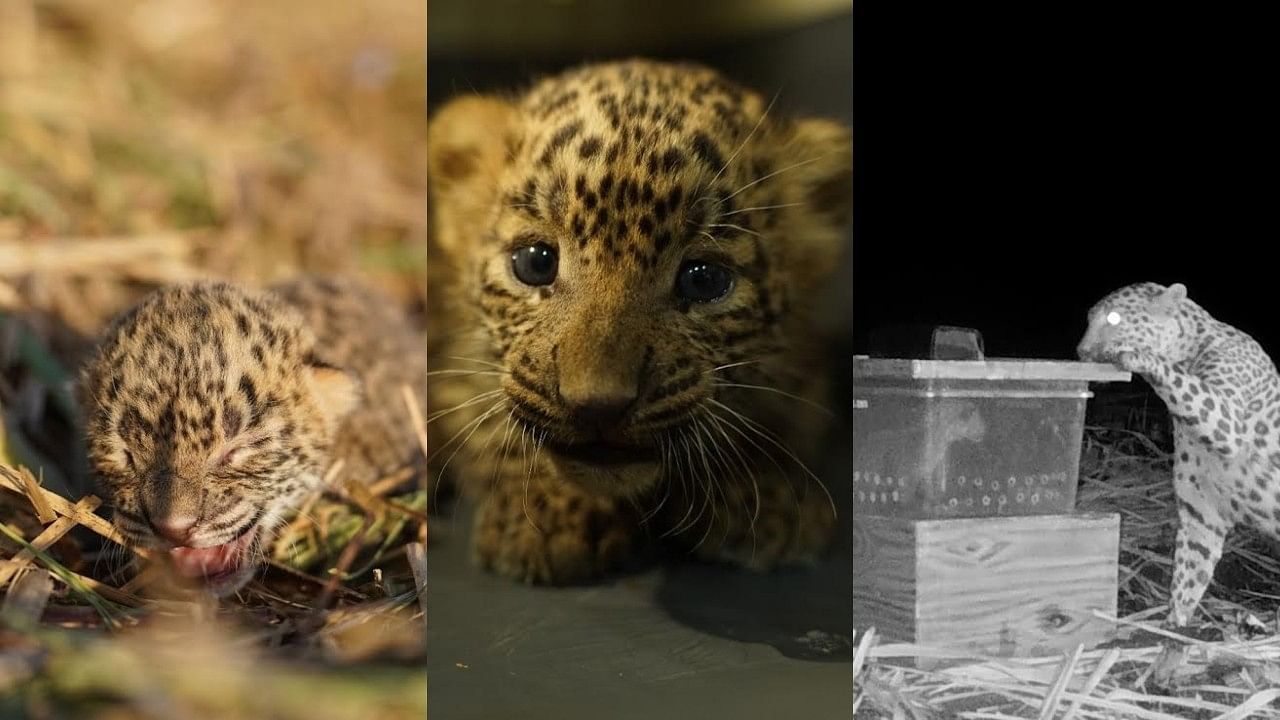
Leopard cubs and a mother as seen in the images.
Credit: Wildlife SOS & Maharashtra Forest Department
Mumbai: Over a 17-year-period i.e., between 2007 to 2024, Wildlife SOS and the Maharashtra Forest Department have successfully reunited 110 leopard cubs with their mothers.
Amidst the challenges posed by rapid urbanisation and habitat fragmentation, this milestone marks a significant achievement in leopard conservation efforts.
In the sugarcane fields of rural Maharashtra, encounters between farmers and leopards have become increasingly common. Maharashtra, being home to the third-largest leopard population in India, witnesses a delicate balance between human and leopard territories.
With sugarcane cultivation expanding, leopard habitats have transformed into agricultural land, leading to frequent encounters between humans and leopards, especially during the harvest season from December to March.
Female leopards, known for their elusive nature, often choose sugarcane fields as birthing sites due to the dense vegetation providing a protective environment for their newborns. However, as farmers begin clearing the fields during harvest, unsuspecting leopard cubs are often discovered, prompting immediate intervention from Wildlife SOS and the Maharashtra Forest Department.
Moreover, beyond the sugarcane fields, leopard cubs have also been found fallen inside open wells, adding to the urgency of conservation efforts. Open wells pose a significant threat to wildlife, as animals inadvertently fall into these death traps, often resulting in fatal consequences. Recognising this threat, Wildlife SOS has undertaken the Open Wells Conservation Project under guidance of Junnar Forest Division, covering 14 wells in Maharashtra to prevent such tragic incidents and mitigate habitat fragmentation.
Amit Bhise, Assistant Conservator of Forests, Junnar Division, said: “Wildlife SOS and Junnar Forest Division call for continued support and collaboration in conserving leopard populations amidst growing urbanisation and habitat loss. Together, we can ensure a safer and brighter future for these magnificent creatures and the ecosystems they inhabit.”
Geeta Seshamani, Co-founder and Secretary of Wildlife SOS, said: “The reunification process is crucial for the cubs as it allows them to acquire essential survival skills from their mothers, including hunting and adapting to the wild. Without maternal guidance, these cubs face a major challenge in their journey to independence.”
Kartick Satyanarayan, Co-founder and CEO of Wildlife SOS, said: “Since 2007, Wildlife SOS has been at the forefront of leopard conservation efforts in Maharashtra, working closely with the forest department to ensure the safety and well-being of these magnificent big cats.”
Mahendra Balu Dhore, Project Manager- Maharashtra, Wildlife SOS said: “Upon receiving reports of stranded cubs, Wildlife SOS along with the forest department, dispatches expert teams to assess the situation, conduct medical examinations, and facilitate reunions with their mothers.”